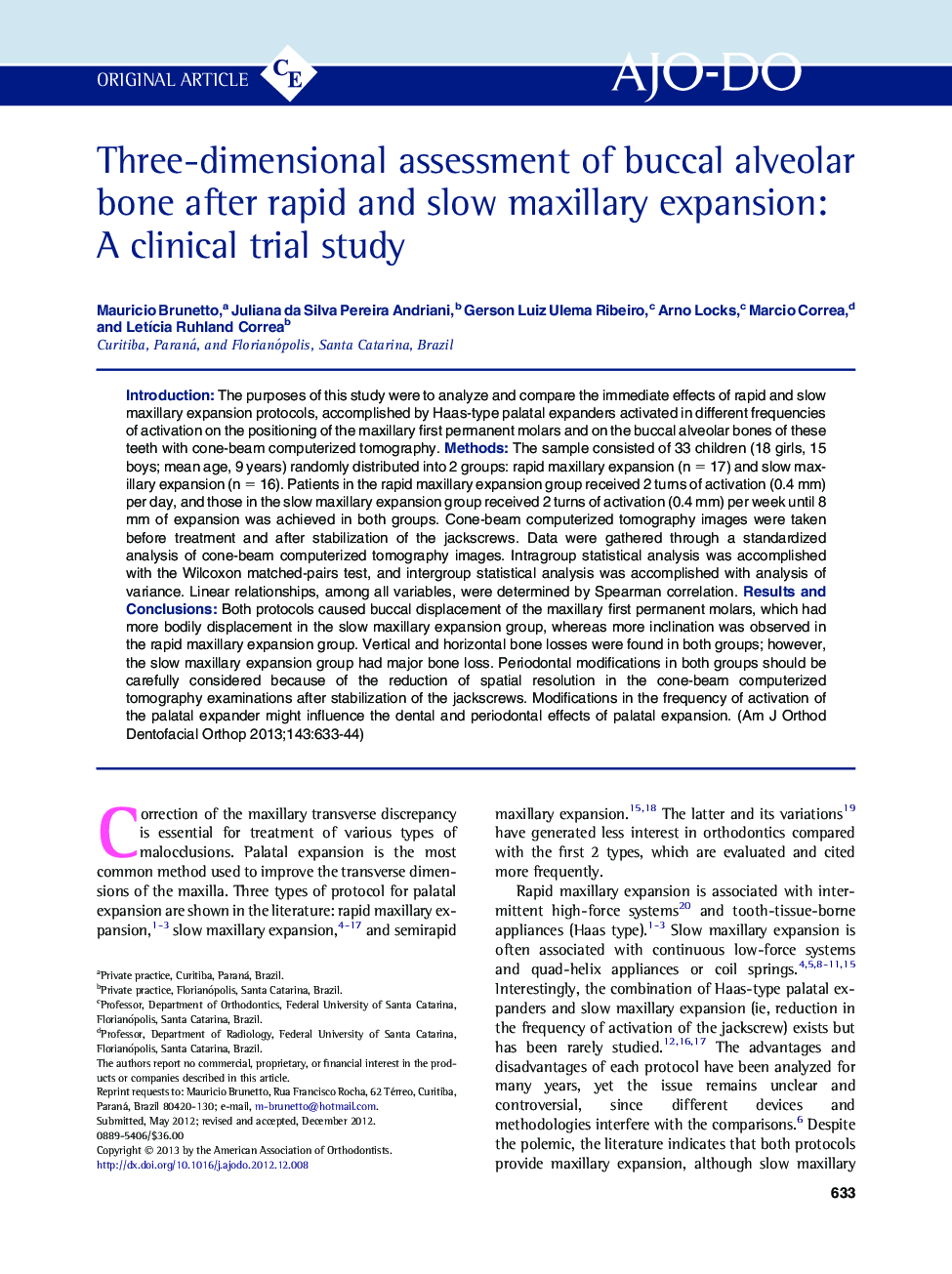| Article ID | Journal | Published Year | Pages | File Type |
|---|---|---|---|---|
| 3116613 | American Journal of Orthodontics and Dentofacial Orthopedics | 2013 | 12 Pages |
IntroductionThe purposes of this study were to analyze and compare the immediate effects of rapid and slow maxillary expansion protocols, accomplished by Haas-type palatal expanders activated in different frequencies of activation on the positioning of the maxillary first permanent molars and on the buccal alveolar bones of these teeth with cone-beam computerized tomography.MethodsThe sample consisted of 33 children (18 girls, 15 boys; mean age, 9 years) randomly distributed into 2 groups: rapid maxillary expansion (n = 17) and slow maxillary expansion (n = 16). Patients in the rapid maxillary expansion group received 2 turns of activation (0.4 mm) per day, and those in the slow maxillary expansion group received 2 turns of activation (0.4 mm) per week until 8 mm of expansion was achieved in both groups. Cone-beam computerized tomography images were taken before treatment and after stabilization of the jackscrews. Data were gathered through a standardized analysis of cone-beam computerized tomography images. Intragroup statistical analysis was accomplished with the Wilcoxon matched-pairs test, and intergroup statistical analysis was accomplished with analysis of variance. Linear relationships, among all variables, were determined by Spearman correlation.Results and ConclusionsBoth protocols caused buccal displacement of the maxillary first permanent molars, which had more bodily displacement in the slow maxillary expansion group, whereas more inclination was observed in the rapid maxillary expansion group. Vertical and horizontal bone losses were found in both groups; however, the slow maxillary expansion group had major bone loss. Periodontal modifications in both groups should be carefully considered because of the reduction of spatial resolution in the cone-beam computerized tomography examinations after stabilization of the jackscrews. Modifications in the frequency of activation of the palatal expander might influence the dental and periodontal effects of palatal expansion.
